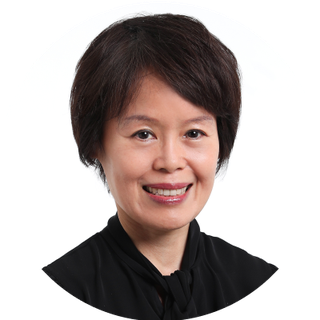Living it up? It'll cost more now in Singapore
Lifestyle Index for Republic up 2.4%; but its ranking in Asia eases to 3rd spot behind Shanghai and HK

Singapore
SINGAPORE has dropped a notch in Julius Baer's Lifestyle Index in 2017. But at third place, it remains one of the costliest places in Asia for luxurious living.
Hong Kong jumped two notches up to become the most expensive city on a price-weighted basis, thanks to an upward swing in the territory's home prices. It is also the most expensive city for fine dining and business class flights.
Julius Baer's Lifestyle Index captures the value of a basket of goods and services representative of the lifestyle of high net worth individuals. In the latest study, the expanded index - covering 11 Asian cities - rose by 1.42 per cent, compared to a contraction of 1.68 per cent in 2016.
The original index of four cities - Singapore, Hong Kong, Shanghai and Mumbai - rose 1.9 per cent compared to a drop of 5.88 per cent previously.
Part of the rebound is driven by a recovery in consumer sentiment in China. The Lifestyle Index in China rose 1.9 per cent in local currency terms, compared to a fall of 7 per cent in 2016.
A second trend in China is the "reshoring'' of luxury purchases where consumers buy items at home, rather than overseas. This was also helped by a reduction in duties on some luxury goods on official channels, and the opening of duty-free zones for domestic tourists.
Asian currencies turned in a mixed performance, falling by 0.9 per cent on average. Weakness in the local currency has a negative effect on the lifestyle index which is reported in US dollars. But currencies also bring to light the pricing power and strategies that luxury brands may use, said the report.
In 2015, for instance, when the euro fell over 20 per cent to the dollar, Chinese consumers could book a round-trip flight to Europe, stock up on luxury buys, and still get a better deal than buying the goods locally. Chanel decided to harmonise prices, raising handbag prices by more than 20 per cent for its core markets.
"The challenge for luxury brands when making such pricing decisions (for potentially temporary macroeconomic effects) is to be able to predict and anticipate the longer-term effects these decisions can have on customer behaviour and perception of the brand,'' said the report.
This year two items were added to the index. One is fine dining where the benchmark is a degustation menu at a "top rated'' restaurant - where possible, a restaurant with two Michelin stars. The other is Lasik procedure, which replaced tooth implants.
In Singapore, the Lifestyle Index rose 2.4 per cent, led by a 7 per cent rebound in property prices. Cigar prices rose 32 per cent, golf club memberships 22 per cent, and legal fees 18 per cent.
Singapore is the most expensive city in the region to engage a lawyer, and is the second most expensive for fine dining and cigars. The only seeming bargain may be jewellery where it is the third cheapest regionally to buy a Cartier Love Bracelet (US$43,547). The most costly city for this is Shanghai at US$48,348.
The report also looked into millennials' lifestyles and preferences. It cites a study by Bain & Co which projects that today's millennials and the generation after (Generation Z) already account for 30 per cent of luxury shoppers, and this would grow to 45 per cent by 2025.
While millennials are willing to spend money on things, they find greater value in experiences and lifestyle enhancements. Over time, this may lead to a shift in brands in the index and a greater tilt towards luxury experiences.
BT is now on Telegram!
For daily updates on weekdays and specially selected content for the weekend. Subscribe to t.me/BizTimes
Consumer & Healthcare
Billionaire Geiger is said to near US$7 billion L’Occitane buyout
HCA beats first-quarter profit estimates on higher patient admissions
US FDA approves Pfizer’s gene therapy for rare bleeding disorder
EU toughens rules on Chinese fashion retailer Shein
Best World under fire from shareholders at AGM over dividends, director salaries
‘Extreme’ climate blamed for world’s worst wine harvest in 62 years
